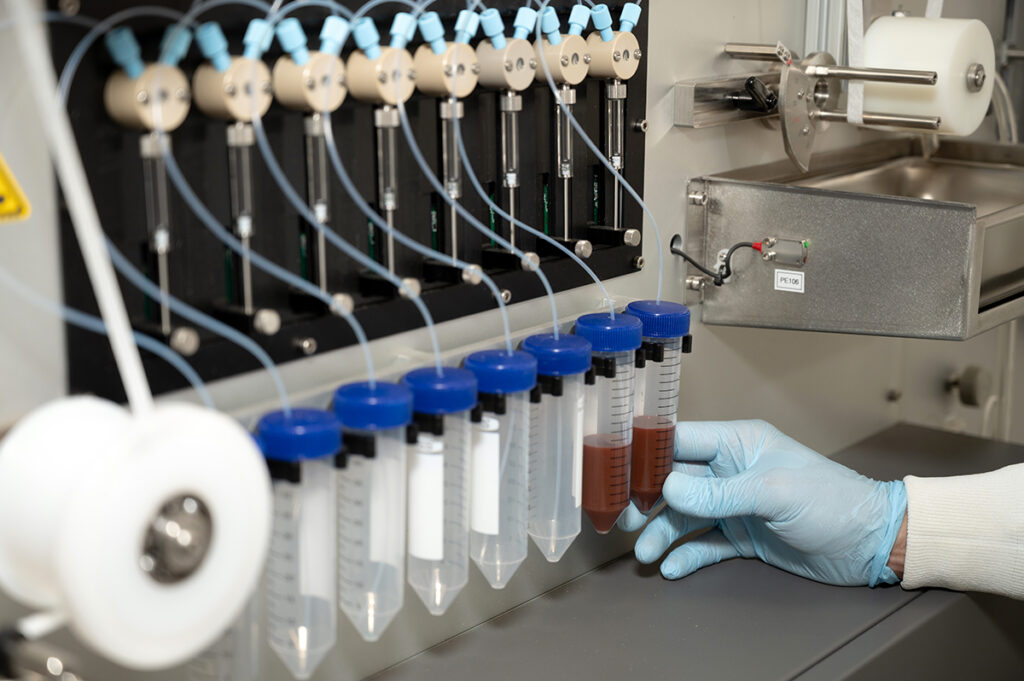Securing Supply Chains for Rapid Diagnostics During Global Disruption

Why Supply Chain Stability Matters More than Ever
The current U.S.-China trade war has reignited global concerns over the stability and security of supply chains — especially for critical sectors like diagnostics. For companies developing lateral flow assays and point-of-need tests, even small interruptions in material sourcing can result in delayed launches, failed partnerships, and lost revenue.
This makes supply chain resilience not just a logistics issue — but a strategic imperative. Diagnostics developers need partners who can guarantee continuity in times of uncertainty.
Supply Chain Risks Impacting the Lateral Flow Assay Diagnostic Industry
As geopolitical tensions rise, the risks to companies relying on global sourcing are increasing. Here are some of the top threats:
- Raw material shortages — including gold nanoparticles, nitrocellulose membranes, plastics, and specialized reagents.
- Manufacturing delays — due to tariffs, export restrictions, or supplier shutdowns.
- Shipping bottlenecks — rising freight costs, customs delays, and unpredictable delivery timelines.
- Overdependence on overseas suppliers — many critical assay components originate in Asia.
- Shifting trade policies — import/export rule changes may impact or delay production.
In short: one disruption can derail your entire go-to-market plan.
Key Questions for Diagnostics Companies to Ask
When evaluating assay development and manufacturing partners, forward-thinking companies should ask:
- How is your supplier protecting against global supply disruptions?
- Can they manufacture critical components in-house?
- Are they equipped to scale production quickly?
- Do they offer flexibility in sourcing materials?
- Are they experienced in managing trade policy compliance across multiple regions?
Best Practices for Building Supply Chain Resilience
1. Plan Ahead and Communicate Regularly with your Vendor Partners. Proactively organize and schedule your needs, orders, and projects. Keep in frequent contact about any issues that could affect production.
2. Invest in Partners with Domestic Manufacturing Capabilities. Working with vendor partners who’ve located production facilities closer to your key markets reduces reliance on volatile global freight systems, ensuring faster turnaround times and fewer customs-related delays.
3. Utilize Vertically-Integrated Solutions Providers Where Possible. From design to development to manufacturing, companies that control the production of critical components like gold sols, specialized reagents, and finished test kits decrease their vulnerability to supplier failures and enables greater quality assurance.
4. Validate Alternative Suppliers. Rely on partners who have nurtured diversified sources for key materials, including gold nanoparticles. This provides critical backup options without sacrificing performance.
5. Plan for Scalability. Ensure your partners can seamlessly transition from prototyping lots to tens of thousands of units, adjusting production volumes as market demands shift.
6. Develop Trade Policy Readiness. Work with experts who understand evolving import/export regulations and can help maintain compliance even as international rules change.

Real-World Impact
Over the past year, BioAssay Works has focused on strengthening elements of our lateral flow manufacturing supply chain, including:
- Partnering with a local Maryland injection molding company enables faster response to new requests, shorter lead-times and consistent transportation costs.
- Utilizing a New Jersey manufacturer of foil pouches — a critical component for lateral flow assay packaging — reduces our reliance on Asian manufacturers.
- Investing in an on-site laser marking system to permanently mark information on cassettes eliminates reliance on outside suppliers.
- Acquiring a reel-to-reel dispensing and drying system for dip coating and spraying of blocking pads, conjugate pads, and NC membranes significantly expands our manufacturing capacity.
- Qualifying multiple vendors of critical strip components, including membranes, sample pads, and backing cards during assay development allows us to continue manufacturing when supply chain disruptions occur.
Conclusion: Strengthen Your Supply Chain for the Future
In an increasingly complex global landscape, investing in supply chain resilience is not optional — it’s essential. Companies that plan well, communicate regularly, and secure strong and flexible supply partnerships will be best positioned to deliver rapid diagnostic solutions to market without disruption.
Looking for a proven partner to safeguard your rapid diagnostic supply chain? Contact BioAssay Works today to learn how we can help protect your project from global uncertainty.
